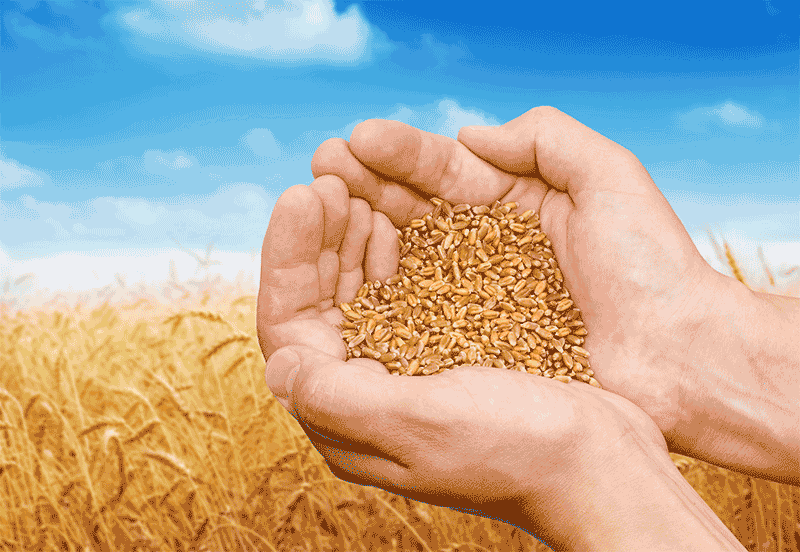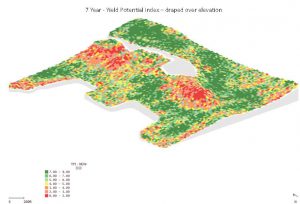Marketing wheat
DECISIONS AND STRATEGIES

ONE OF THE more significant market influencers in the Ontario wheat business is that 2016’s big crop is going to leave a large carry out of old crop wheat inventory as we move into the 2017 harvest. Based on the current pace of use, it seems likely that nearly one third of this past year’s wheat crop will still be in storage as we move into the 2017 harvest.
It’s actually astonishing how much capacity Ontario farmers have for producing wheat. In 2015, the province’s total production was just over one million tonnes, and in 2016 it jumped to 2.4 million tonnes. While the agricultural industry’s capacity to produce is impressive, the milling industry (and ultimately grocery consumers), doesn’t have the ability to exponentially increase consumption. Even if we double the amount of Ontario wheat that gets fed between 2015 and 2016, there will still be a tripling of carry out inventory.
Big ending stocks do not mean that the day in which you are reading this article is the right day to run out and sell wheat, but it does imply that we can’t be too passive about our wheat marketing strategies. Just waiting around for the price to go up only works if the marketplace is running some risk of running out of wheat supply, and in our current situation that is certainly not the case. The challenge for producers with wheat to market is to develop a rational disciplined strategy on how they are going to market their wheat crop, and which indicators will trigger their marketing decisions.
SELLING CARRY
When a market is well supplied, the futures market sets up in what is referred to as a “carry”, which is much like the down-bound escalator in a shopping mall. The furthest away “step” or futures month is the highest, and the nearest “step” or futures month is always the lowest. As each futures contract expires, and disappears, the contract in second position drops in to the lowest spot. To be certain, the whole futures price complex can move up and down, but the positional order of price is not apt to change. Producers should still be trying to sell the highs of the futures market, but when March wheat hits its highs, May wheat will be even higher. If your marketing plan is to move wheat in April, don’t wait until March to price it. In fact, if you normally ship wheat in April, take a really serious look at marketing some ’2017 crop wheat for delivery in April of 2018 now. Those big carry spreads are free money — you will want to have a plan which captures them.
CAPTURING EXCHANGE
Nearly one third of Ontario’s wheat production is exported to either the U.S. or other countries which are not paying for it in Canadian dollars. That strong base of non-domestic demand means that any weakening in the loonie translates into higher cash prices for wheat almost instantly (and a strengthening of the Canadian dollar is detrimental to price). Ideally we want to time our sales in order to capture dips in the Canadian dollar. There are really two positive impacts of a lower Canadian dollar. The first is that since our wheat crop is really a commodity based on U.S. values, the smaller the loonie, the bigger the number on our grain cheque; and secondly, a weaker Canadian currency makes it easier to export Ontario wheat to other markets in the world, thereby enhancing demand. A weaker dollar strengthens our market for both reasons. And a stronger loonie has the opposite effect by surpassing cash values and making us a less attractive export origin.
Intuitively, we know as farmers that we need to monitor the currency markets as part of our grain pricing strategy, but how can we predict the loonie’s next move? Oil prices are an extremely useful indicator for the Canadian dollar. In times when oil prices are high, the Canadian dollar is high, and conversely, when energy prices are lowered, the value of the Canadian dollar also slips. Monitoring interest rates announcements by both the Bank of Canada, and the U.S. Federal Reserve are also key to anticipating currency value shifts. Try to focus making your grain contracting decisions while the dollar is low, and if we see a rise in oil prices or a change in interest rates which would buoy the currency, make certain that your marketing plan is caught up.
SEASONALS IN THE FUTURES MARKET
As producers, we all know that nothing very interesting happens in a wheat field between the U.S. Thanksgiving and Groundhog Day. Markets trade on the anticipation of change, and in a snow-covered field of dormant winter wheat, there is astonishingly little change so there is very little fuel for volatility in wheat futures during the winter months. Price movement is largely a matter of staying in step with the rest of the ag futures complex, but that all starts to change as spring starts the long march north across this continent’s winter wheat producing regions and frosts, floods, ice, and snow have the potential to wreak havoc on new crop wheat stands, and price volatility responds. While winter kill is certainly bad if you are located in an area which gets it, it rarely causes continentally devastating losses to wheat production which impact global supply. Realistically, what we are looking for as farmers is a weather based “pop” in futures values which allow us to fill some pricing orders, or add to our incremental sales in February or March.
Trying to time wheat marketing decisions around these three factors seems about as complicated as trying to waltz with a three-legged dance partner, but it really is not as complicated as it sounds. The trick is to develop a sense of discipline about what you don’t want to miss. For instance: if I don’t want to miss on the opportunity to sell futures carry, I can’t let myself not price wheat until it’s time that it is leaving the farm. If I don’t want to miss the opportunity to price grain on a low dollar, I’ll learn to follow the energy markets, and if oil prices are starting to rally, I’ll get caught up on my sales program. If I don’t want to miss the seasonal volatility, do I have pricing orders in place to catch a rally when one pops up? It is surprising how often these three factors fall into line if you make a disciplined attempt to manage them.
Stephen Kell is the business manager — branch grain for Parrish & Heimbecker. He has 25 years of experience in the Ontario grain industry. •











